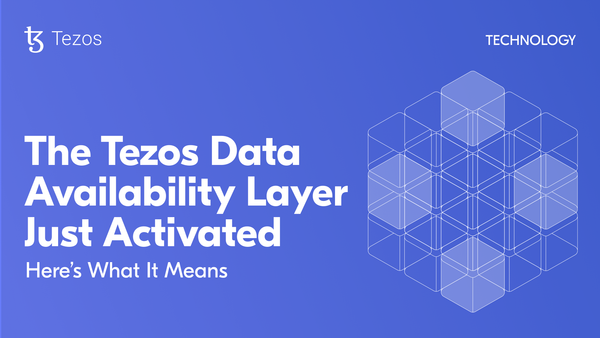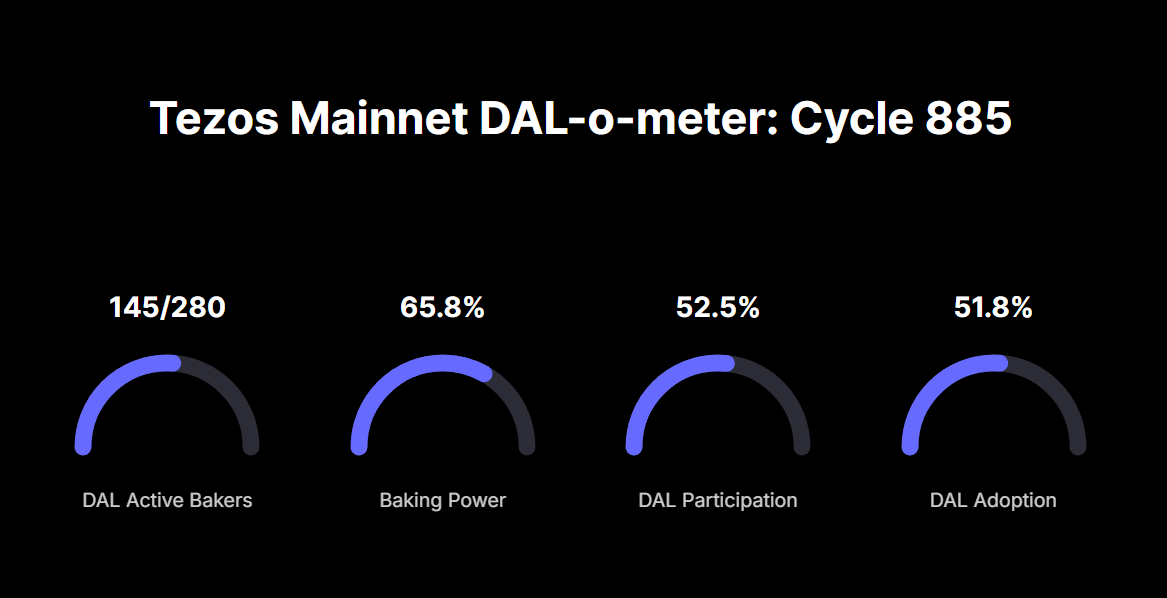The Tezos Data Availability Layer Just Activated - Here's What It Means
Tezos just unlocked a core piece of its scaling roadmap. But it only works if we keep it active.
700 words, 4 minute read

The Data Availability Layer (DAL) just went live on Tezos, and while it’s not making headlines, it should. If you care about rollups, decentralization, or simply scaling without shortcuts, this development is foundational.
Let’s unpack what DAL does, why it matters now, and why more baker participation isn’t just welcome, it’s necessary.
What Even Is the Data Availability Layer? #
Imagine you’re in a big room where everyone’s shouting important information, transactions, smart contract calls, state updates, and you need to be sure that someone, anyone, heard it.
That’s the core idea behind DAL. It’s not storage. It’s not archiving. It’s proof of publication, ensuring that data was publicly available at the right moment so rollups can execute safely and verifiably.
Why does that matter? Because without it, scaling through rollups is bottlenecked by the size of Layer 1 blocks. DAL solves that. It lets data be distributed efficiently across the network, sharded, redundant, and verifiably published, so rollups can run at high throughput while still being secure and decentralized.
Think of DAL Like a Project’s Group Chat #

Someone drops an important file in the group chat. Not everyone needs to download and save it forever, but enough people need to see it and confirm it was shared, otherwise, the project can’t move forward.
DAL does exactly that for Tezos rollups. It verifies that important data was published, received, and acknowledged by enough participants in the network.
It’s not about storing every byte forever. It’s about making sure rollups can trust that the data they rely on was broadcast clearly and publicly when it mattered.
That’s the difference between theoretical scalability and something you can build on.
How It Fits: The Missing Piece for Rollup Scaling #

Without DAL, rollups like Etherlink or the planned Tezos X canonical rollup would eventually hit a wall. You can only post so much data on Layer 1 before the blocks fill up.
Before DAL, every node had to hold and verify everything. Now, thanks to error-correcting codes and a clever sharding system, bakers share the load, each holding a small slice of the data, proportional to their stake. Rollups can use DAL to post huge amounts of data off-chain, but with strong guarantees that it was published and made available.
Ethereum is still figuring this out, using blobs and hoping for danksharding someday. Tezos is already here.
And now, thanks to the Rio upgrade, running a DAL node is also incentivized**.** It’s not just about doing your part. There’s skin in the game.
Incentives, Participation, and the Line We’re Walking #
 Live stats: dal-dashboard.vercel.app
Live stats: dal-dashboard.vercel.app
The Rio upgrade introduced an interesting change: when 66% of the network’s stake runs DAL nodes, 10% of participation rewards go to bakers who run those DAL nodes. Thanks to many bakers who are participating already, this mechanism has been active for the last two cycles, meaning only bakers running the DAL nodes are earning these rewards.
But here’s the catch: for this rewards system to stay active, 66% of the total stake must keep attesting to DAL data.
Right now, we’re barely there. At the time of writing:
- 65.8% of the stake is attesting via DAL nodes
- 52.7% of bakers are participating
- The system is live, but fragile
If participation drops, the incentives halt, and we risk losing momentum. That’s why the next step matters: we need more bakers to join in to keep the DAL running more efficiently and smoothly, not just barely.
This isn’t about optimism. It’s about stability.
Bakers: It’s Your Move #

Running a DAL node is one of the simplest, high-impact things a Tezos baker can do right now. It’s low bandwidth (we’re talking home-connection levels), doesn’t require separate machines, and is now directly rewarded.
Most importantly, it’s how we scale Tezos without outsourcing trust or selling out decentralization. DAL is one of those features that doesn’t ask you to believe. It asks you to participate.
The vision of Tezos X, with a fast, modular, decentralized execution layer, isn’t just an engineering dream. It’s unfolding now. But it only works if enough of us show up.
So if you’re baking, now’s the time to step forward and set up your DAL node!